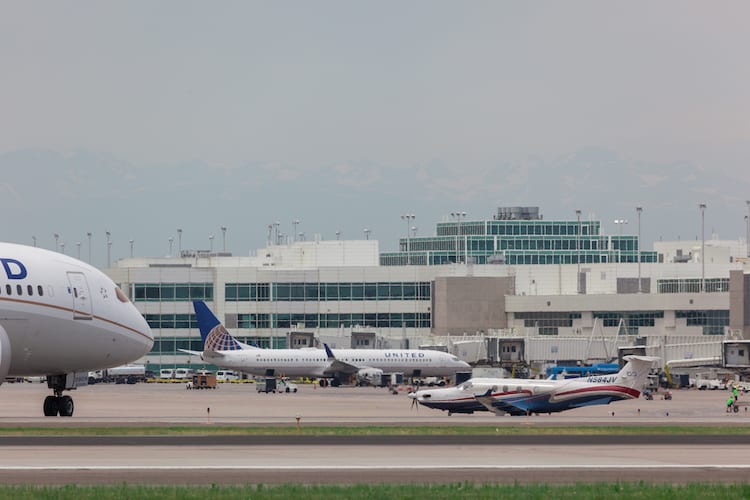
Photo (Denver International Airport)
By modernizing the U.S. airspace as we know it, the FAA’s NextGen effort is grounded in critical innovations that will make flying more safe, predictable and efficient.
Being approximately halfway through its multi-year implementation, the ambitious program is already leveraging next-generation data and visualization solutions that meet the demands of the NextGen National Airspace System to handle more air traffic and provide data sharing for actionable decision-making.
Following is a summary of these key innovations and how they will help support the FAA’s mission of providing the safest, most efficient aerospace system in the world.
Airports Geographic Information System (AGIS)
The FAA has moved to using a flexible GIS system that offers a single web app that helps to collect airport and aeronautical data. It facilitates submission of changes, which match defined business rules to ensure that the proper FAA office is notified in an accurate and timely manner.
The agency is also streamlining the existing survey application and integrating other aeronautical applications into a single Internet portal for submission and delivery of airport and aeronautical data. The current system supports open data standards, enhanced workflow and tracking capabilities, automatic validation of all submitted data, as well as a GIS viewer.
The second phase of this part of the implementation will include electronic airport obstruction charts and electronic airport layout plans. Ultimately, this new GIS system will integrate multiple versions of the airport data, and enable the sharing of data with other FAA systems such as iOEAAA and eNASR
Terminal Flight Data Manager (TFDM)
In an implementation that began in 2012, the TFDM is a platform that will provide the automation environment necessary to support future flexible terminal and airport operations for NextGen towers. It will establish a data exchange and processing architecture for future tower operations. The system will include a taxi route generator and a suite of tools for sequencing and scheduling, route-assignment, departure route viability and airport configuration.
The TFDM also offers a suite of tools that will drive an integrated tower-user display suite consisting of surface surveillance, extended electronic flight strip or Flight Data Management (FDM), airport information and airport systems status.
An automation-assisted suite of tools will integrate information from a variety of systems and decision support tools to create a comprehensive database characterizing arrival and departure demand, relevant airport operating parameters and surface/airspace constraints that may affect capacity, efficiency and safety.
The TFDM will have the ability to have shared information of the traffic picture by the airline operators, service providers and airport operators which will aid in normal operation along with the ability to react to off nominal situations such as weather events.
Data Communications Integrated Services (DCIS)
In today’s National Air Space (NAS), air traffic management depends on voice communications to relay a wide array of critical information between air crews and controllers. The use of voice communications is labor intensive, time consuming and limits the ability of the NAS to effectively meet future traffic demands.
Supporting the NextGen Data Communications program, the DCIS aims to reduce errors common in voice communications, such as readback/ hearback issues, control instructions intended for one aircraft taken by another, and transposed call signs.
The DCIS will also increase airport efficiencies by providing revised departure clearances at busy hub airports. In the en route airspace, capabilities such as trajectory-based operations, continuous descent approaches, and dynamic weather reroutes can be enabled using this system.
Conclusions
When a bill in 1958 was introduced to create the FAA, lawmakers most likely did not foresee how the agency would evolve into being a data- and innovation-driven entity that further advances the mission of providing a safe and efficient use of national airspace.
This vision is fully coming to life, and paves the way for a national aviation effort that ensures that our dream of flight will continue to live on well into the future.
 A former pilot, Marc Melviez is an aviation enthusiast and the Chief Strategy Officer for Hexagon’s Geospatial Division. Previously, Marc was the Group CEO for Luciad. For more information, reach him at [email protected].
A former pilot, Marc Melviez is an aviation enthusiast and the Chief Strategy Officer for Hexagon’s Geospatial Division. Previously, Marc was the Group CEO for Luciad. For more information, reach him at [email protected].